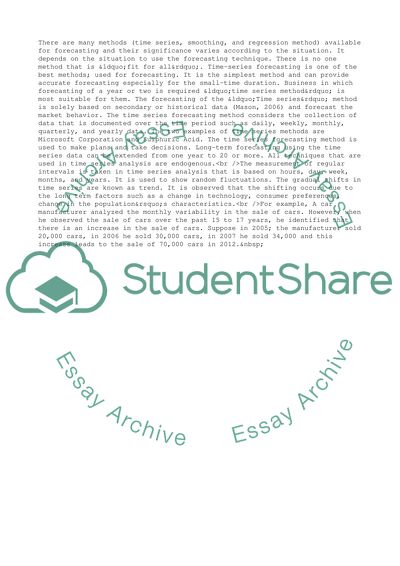Cite this document
(Time Series Forcasting Coursework Example | Topics and Well Written Essays - 1500 words, n.d.)
Time Series Forcasting Coursework Example | Topics and Well Written Essays - 1500 words. https://studentshare.org/business/1811356-time-series-forcasting
Time Series Forcasting Coursework Example | Topics and Well Written Essays - 1500 words. https://studentshare.org/business/1811356-time-series-forcasting
(Time Series Forcasting Coursework Example | Topics and Well Written Essays - 1500 Words)
Time Series Forcasting Coursework Example | Topics and Well Written Essays - 1500 Words. https://studentshare.org/business/1811356-time-series-forcasting.
Time Series Forcasting Coursework Example | Topics and Well Written Essays - 1500 Words. https://studentshare.org/business/1811356-time-series-forcasting.
“Time Series Forcasting Coursework Example | Topics and Well Written Essays - 1500 Words”. https://studentshare.org/business/1811356-time-series-forcasting.


